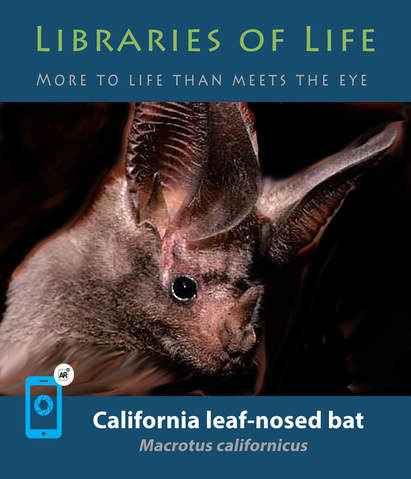CALIFORNIA LEAF-NOSED BAT: Did you know?
|
CLICK ON LINK TO DOWNLOAD CARD
|
The California leaf-nosed bat is named for a large, triangle-shaped fold of skin on its nose that looks a bit like a leaf. It also has very large ears. It may look funny, but both the nose-leaf and the large ears help California leaf-nosed bats find prey through something called echolocation. Echolocation is when animals use sound to find things, such as food, in the dark. They screech, which produces sound waves, and then they listen for the sound waves to bounce off the prey. By doing this, they can tell where the prey is, how far away it is, and maybe even what it is! The California leaf-nosed bat eats insects. Animals that eat only insects are called insectivores. California leaf-nosed bats eat things like crickets, grasshoppers, beetles, and moths. Bats in general are very important for controlling insect populations. California leaf-nosed bats can live up to 30 years in the wild. Animals that eat California leaf-nosed bats are snakes, coyotes, owls, raccoons, and even house cats. Audio credit: Veronica Zamora-Gutierrez, UCL/University of Cambridge
| ||||||

